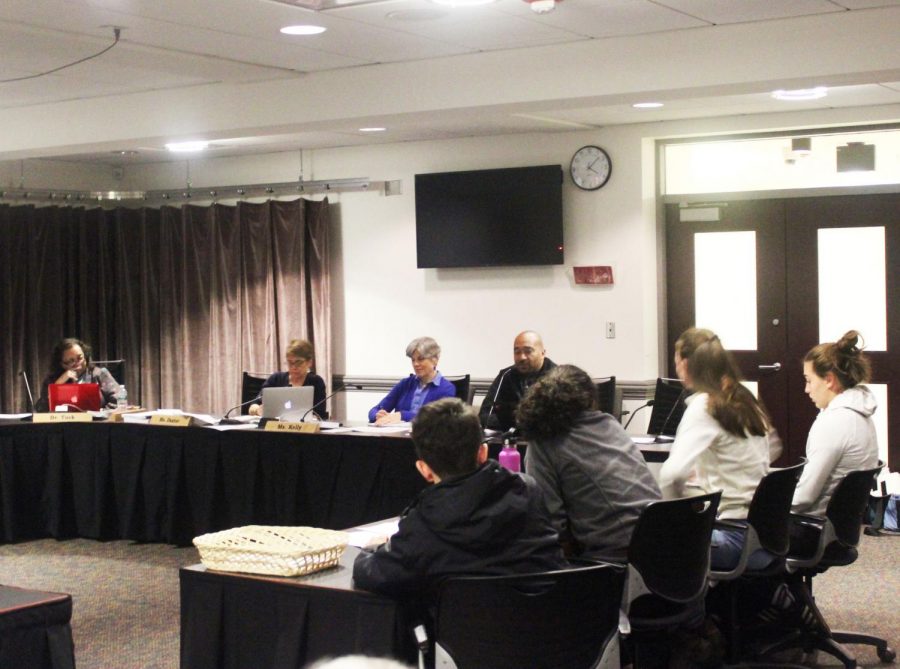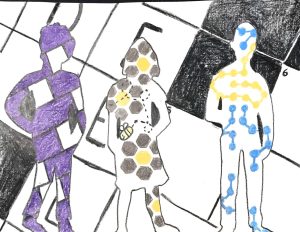School Committee Addresses AV Policy
The School Committee discussed the AV policy on December 5th.
December 19, 2017
On Tuesday, December 5th, the School Committee held a meeting to discuss the updated attendance violation (AV) policy. Student government members, CRLS administration and staff, interested CRLS students, and anyone who was concerned or interested about the new guidelines attended the meeting.
Through the collaboration of the Cambridge Youth Council and CRLS’ administration, a new attendance violation policy was put in place for the 2017-2018 school year that seems to please many students and staff members. According to the new policy, once students have four unexcused absences or twelve unexcused tardies, ten points will be deducted from whatever classes they have missed that amount of school in.
At the meeting, administration made it clear that they do not seek to punish students. However, attendance must be monitored in order to prepare students for life after high school. To make the AV policy more fair, students can “buy back” their ten lost points once per year through coordination with their dean. Currently, the way that points can be bought back is not set in stone. Some possibilities include volunteering in the tutoring center, helping out in the library, or writing an essay.
In addition to policy changes, other alterations have been made to CRLS’ approach to attendance. There are now no tardy check-in desks at the front doors at 8:05, and teachers must input attendance twice throughout the class period.
While the AV policy has changed over recent years, the consequence for attendance violation is consistently based on having four unexcused absences or twelve unexcused tardies.
During the 2013-2014 and 2015-2016 school years, the AVF policy was implemented. This declared that once a student had four unexcused absences or twelve unexcused tardies in a quarter, the student would receive a failing grade in the class that quarter. However, there was a buyback policy.
After the AVF policy, the AVR or AV10 policy was created for the 2016-2017 school year. The AV10 policy stated that after being unexcused from four full classes or being tardy to twelve classes within one quarter, a student’s grade would be reduced by 10% in that class with no way to buy back the points. Even if students had missed the same amount of school, those with higher grades would lose more points compared to students with lower grades, which was viewed as a major equity issue in the eyes of both students and the administration.
Other ideas about how to improve attendance at CRLS are still up for debate. Many hope that transportation to school via the MBTA could be improved, since that is how many CRLS students arrive to school. The CRLS administration is currently communicating with the MBTA on how to alter bus routes so that buses could arrive directly at CRLS.
Ideally, the Cambridge Youth Council aims for tardiness to be calculated by compiling the total amount of minutes a students is late to class within a fifteen minute threshold. Currently, once a student is late, they might not have a motive to come to class as quickly as possible since they will be marked late no matter what. However, Aspen is not yet capable of calculating the number of minutes late a student is.
School Committee member Patty Nolan seemed hopeful on updating the technology that takes attendance, saying, “Seamless integration with technology in terms of tracking the policy seems to be something [we’ll be] able to solve.”
Overall, most who attended this School Committee meeting agree that the policy must be fair for all students. School Committee member Emily Dexter brought statistics behind the attendance of CRLS students to attention at the meeting. Dexter explained that the major differences in terms of attendance between demographics, specifically regarding social class and race, could be caused by a plethora of reasons. These causes to being absent or late usually stem from equity issues including transportation, different languages spoken at home, the distance of students’ commutes to and from school, as well as general responsibilities. “We’ve got to get to the point where the policy is equitable,” commented senior and Student Representative to the School Committee Juliette Low Fleury to the Register Forum.
Low Fleury and others think that a good way of achieving this goal is by combining different organizations within CRLS to work towards solutions using a variety of opinions. For example, Student Government and the Cambridge Youth Council may collaborate in the future.
Communication about the new AV policy was a major topic of interest at the meeting. Many students in attendance were surprised that there was a buyback policy and felt that the administration was keeping this policy from them. This concern about transparency between CRLS students and the administration was mentioned by multiple students during public comment.
Senior Helina Mekonnen, who heard about the buyback policy for the first time during the meeting, explained to the Register Forum, “The parts that are most critical to the policy have to be known by the student body.” Patty Nolan agreed, telling the Register Forum, “There’s no reason not to let people know about the buyback—we should all be about restorative justice.”
Students, staff, and School Committee members are continuing to improve the attendance protocol in attempts to make it more fair to all students while also maintaining an incentive to attend school. Cambridge Youth Council members Elaina Wolfson ‘18 and Rory Millar ‘19 both played an important part in updating the AV policy. Wolfson says she encourages students to “keep fighting for change. … It took us a year to get to this place.” Further details on the updated attendance policy can be found on page 29 of the CRLS student handbook, which is available online.
This piece also appears in our December print edition.










